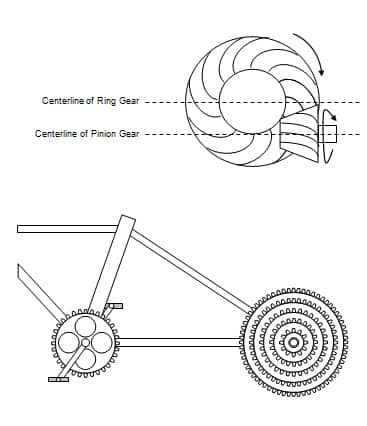Gears are available in various shapes and sizes. Their application throughout the transportation industry varies greatly. When two (2) or more  are used together as an assembly they are commonly referred to as a transmission (gearbox). The transmission’s primary task is to transmit motion, change the direction of the motion and/or change the rate of the motion.
are used together as an assembly they are commonly referred to as a transmission (gearbox). The transmission’s primary task is to transmit motion, change the direction of the motion and/or change the rate of the motion.
Gear Types
There are four (4) main types of gears used in transmissions. Spur, helical, bevelled and hypoid. These gears may be either external gears (teeth are on the outside) or internal gears (teeth are on the inside).
Spur
Spur gears are the simplest and the least expensive gear to manufacture. Because of their straight tooth design, they are easy to engage (mesh)  and disengage with other gears. These factors make them the most popular choice for most applications. However, they are also the noisiest and weakest because there is only one tooth contact at any time.
and disengage with other gears. These factors make them the most popular choice for most applications. However, they are also the noisiest and weakest because there is only one tooth contact at any time.
Helical
Helical gears are superior to spur gears. Their design allows for a one and a half tooth contact making them stronger then spur gears. They are also quieter than spur gears making them more preferable for use in the transmission. However, due to their design, when the “Drive” gear is turning the “driven” gear, the “driven” gear will have a tendency to want to slide along its shaft, out of line with the “Drive” gear. This is referred to as side thrust.
Bevelled
Bevelled gears are used to change the direction of the drive shaft (usually by 90 degrees). These gears are conical shaped, which means they are shaped like a cone. They can be spur or helical cut. Bevelled gears are found in the differential (final drive) assembly.
Hypoid
Hypoid gears are used primarily in differential assemblies for rear wheel drive vehicles. These gears are cut in a special spiral-bevel pattern, which allows for the centerline of the two (2) shafts to be offset. This means the drive shaft running the length of the vehicle can be mounted lower to improve passenger comfort. Their design provides a two and a half (2 ½) tooth contact.

